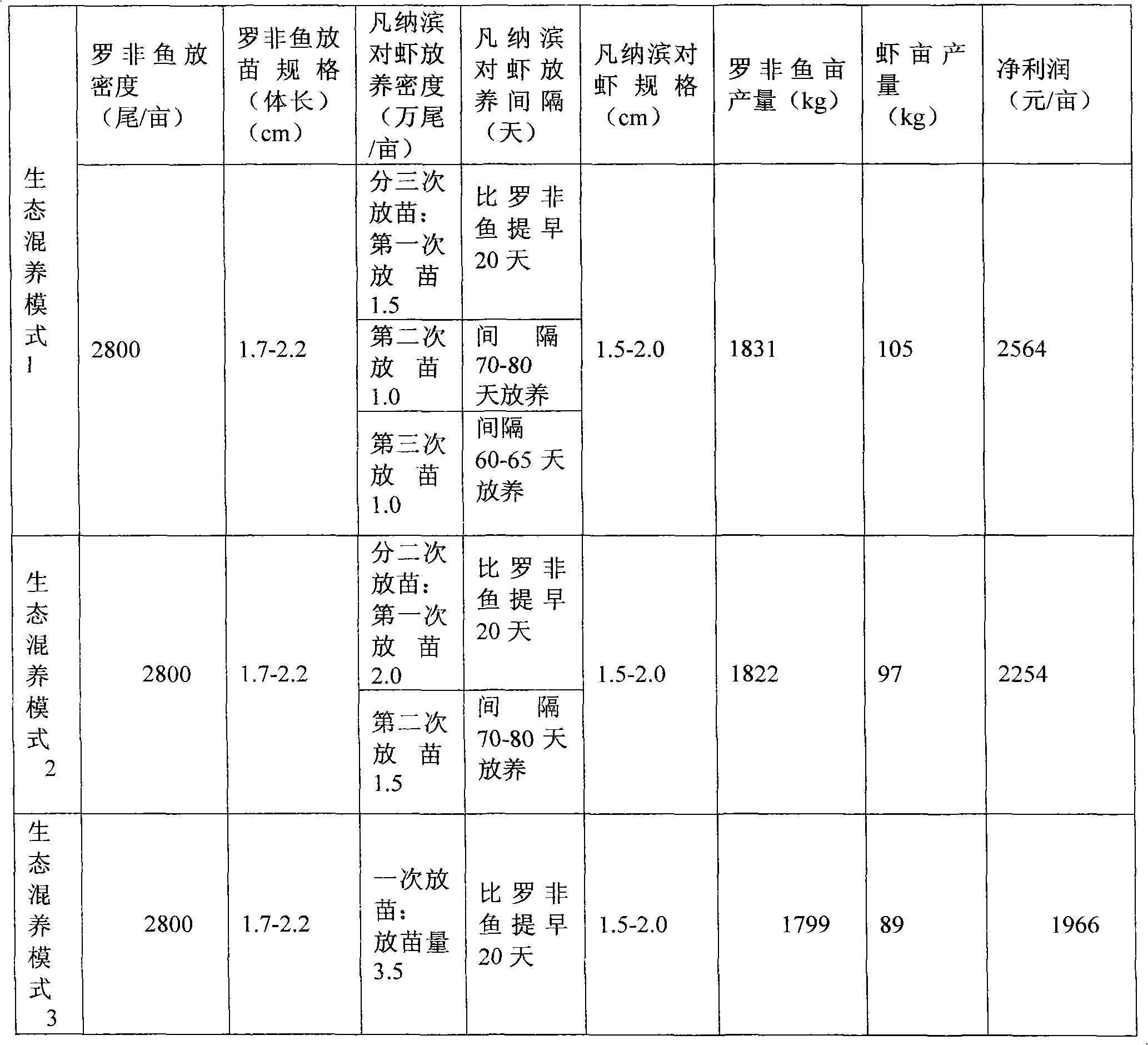Ecological breeding method for mixedly breeding tilapia mossambica and litopenaeus vannamei boon
An ecological farming and vannamei technology, which is applied in the ecological farming field of polyculture of tilapia and penaeus vannamei, can solve the problems of rampant diseases, inability to increase the yield per unit area, harm to the human food chain, etc., and reduce the risk of infection. opportunities, reduction of rapid reproduction and spread, effects of improved water environmental conditions
- Summary
- Abstract
- Description
- Claims
- Application Information
AI Technical Summary
Problems solved by technology
Method used
Image
Examples
Embodiment Construction
[0013] The present invention adopts the polyculture mode of tilapia and Litopenaeus vannamei. When the water temperature rises and stabilizes above 20°C in spring every year, 75 to 100 kilograms of quicklime per mu is used for dry pond disinfection. After 5 ~7 days after the toxicity disappears, start stocking Litopenaeus vannamei seedlings, and stock Tilapia species after 20 days. The number of times of stocking Litopenaeus vannamei seedlings in the mixed culture mode can be three types. The specific stocking density is shown in Table 1.
[0014] Table 1 A new ecological model of polyculture of tilapia and Litopenaeus vannamei
[0015]
[0016] 2. Feeding management
[0017] Mainly compound feed, supplemented with cakes and bran, the daily feeding amount is 3% to 5% of the total fish body weight in the early stage, and 2% to 3% of the total fish body weight in the later stage, and is fed once in the morning and afternoon. Pay attention to observe the feeding situation of ...
PUM
 Login to View More
Login to View More Abstract
Description
Claims
Application Information
 Login to View More
Login to View More - R&D
- Intellectual Property
- Life Sciences
- Materials
- Tech Scout
- Unparalleled Data Quality
- Higher Quality Content
- 60% Fewer Hallucinations
Browse by: Latest US Patents, China's latest patents, Technical Efficacy Thesaurus, Application Domain, Technology Topic, Popular Technical Reports.
© 2025 PatSnap. All rights reserved.Legal|Privacy policy|Modern Slavery Act Transparency Statement|Sitemap|About US| Contact US: help@patsnap.com

